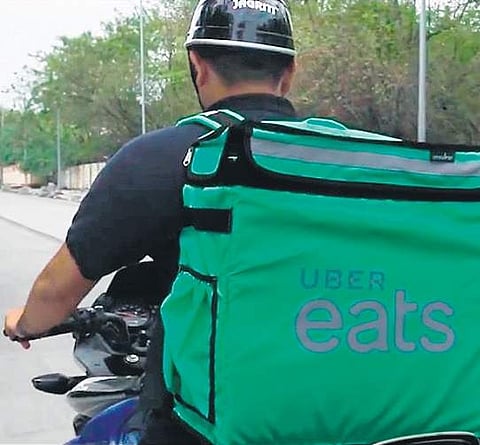

Global taxi-hailing platform Uber is having a hard time cracking the food delivery business in India, with the company trailing third behind home-grown rivals Swiggy and Zomato. To make matters worse, the US-based cab aggregator’s discounts and incentives to drive traffic in the segment has been putting a significant dent in its global margins.
According to company officials, including its global chief executive Dara Khosrowshahi and chief financial officer Nelson Chai, the firm has recorded lower margins in its UberEATS business in India compared to its core taxi-hailing operations. This was one of the reasons contributing to the company’s $5.2 billion net loss for the April to June quarter, analysts noted, adding that Uber had taken a similar hit the previous quarter too when it had posted a USD 1 billion net loss.
Uber’s troubles with the rapidly growing Indian food delivery business arise primarily from the intense competition for the market, with both established players — Swiggy and Zomato —- holding a large market share and ramping up investments. “... the market is very, very competitive. We usually aim to be number one or number two in any market, but we are number three here now,” Khosrowshahi said during an analysts’ call after the results announcement.
The tussle for customer and partner acquisition has forced Uber to keep doling out incentives for its driver and restaurant partners and discounts for its customers, bringing its global food business margins (take-rate) nearly a 100 basis points lower. According to Chai, Uber’s food business take-rate stood at around 10.2 per cent globally during the quarter, but “ex-India, probably would have been another 100 basis points or so”.
However, both executives dismissed reports that the company is looking to sell its UberEATS business in the country, stating that it continues to operate in India. Khosrowshahi also told analysts that the management believes UberEATS India can meet the same success as its core cab-hailing business. “We proved our ability to win in rides, and my expectation is the same on Eats... We’re taking some of the lessons and extending them into the Eats category,” he said.
UberEATS India’s financial troubles are not new. Uber had disclosed in June this year that commissions in its overall Indian business had taken a beating from high discounting and incentives during the first three months of 2019, with average commissions falling by a sharp four per cent. “In India, increased incentives to consumers, drivers and restaurants drove nearly half of the decline in UberEats’ take rate to 8 per cent from 12 per cent a year ago,” Chai said in June. Chai had also noted that at this stage of the business, the firm “was funding the eater, the courier as well as the restaurant”.
“The high-competition environment in the segment doesn’t offer much choice to companies that want to gain market share,” said a senior industry marketing executive, “the average monthly cash-burn rate of the market leaders are currently arbout $30 million on just discounts and incentives alone. Serious players will need to play the long game here.”
uber global food business dips
The tussle for customer and partner acquisition has forced Uber to keep doling out incentives for its driver and restaurant partners and discounts for its customers, bringing its global food business margins (take-rate) nearly a 100 basis points lower